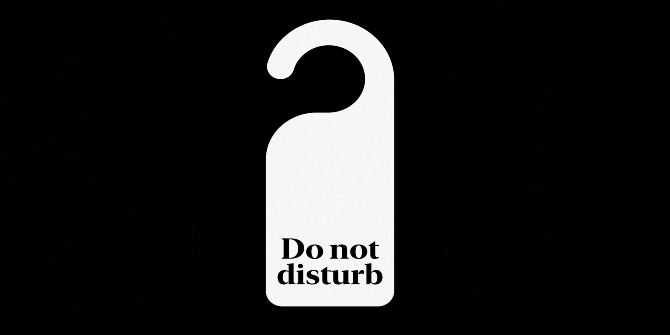
 Melanie Henwood and Bob Hudson consider the recent guidance around visits to care home residents. They discuss the complex balance of costs and benefits and highlight the importance of adopting a nuanced and personalised approach, rather than an over-cautious standardised protocol.
Melanie Henwood and Bob Hudson consider the recent guidance around visits to care home residents. They discuss the complex balance of costs and benefits and highlight the importance of adopting a nuanced and personalised approach, rather than an over-cautious standardised protocol.
The government’s attempts to combat COVID-19 are increasingly being characterised by confusion. One recent study found that just 45% of adults in England understand current government guidelines compared with 90% back in March, when stricter rules were imposed under the clear message to ‘Stay home, Protect the NHS, Save Lives’. Policy on visits to care homes is on a similar trajectory of inconsistency and lack of transparency. One of the most poignant images after lockdown was of relatives gazing through windows at their friends and relatives living in care homes at a time when visiting was completely banned. This has since been replaced by some easement of visiting rules; but new DHSC guidelines threaten to reintroduce confusion and turmoil into the lives of the 400,000 plus care home residents and their families.
Since early July, many care homes have been facilitating one-to-one garden visits between residents and relatives or friends, subject to clear protocols and limitations on duration and frequency. Although far from ideal, this has been much better than the previous forced separation. Many will have struggled to maintain meaningful contact with their families through telephone or video calls, and for those people living with cognitive impairment it will have been especially difficult. The new guidance, however, could put even these modest consolations at risk.
A month before the guidance was issued, the Care Provider Alliance (the national body representing voluntary, private, and community sector care providers) produced its own protocol to support care homes reopening ‘in a way which is safe and proportionate to their localised understanding of the risk’. It established a set of principles to enable providers to adopt a ‘dynamic risk-based approach’, and to consider the risks of allowing visitors against the risks of continuing to prevent them, with the negative consequences on residents’ mental and emotional wellbeing.
The new guidance adopts much of the language and content of the Care Provider Alliance protocol but adds one potentially damaging sentence:
To limit risks, where visits do go ahead, this should be limited to a single constant visitor, per resident, wherever possible. This is in order to limit the overall numbers of visitors to the care home and the consequent risk of infection.
Deciding on the policy for visits in a local authority area is apparently a matter for the Director of Public Health ‘who will assess the suitability of a specified level of visiting guidance for that area taking into account relevant infection and growth rates’. However, the decision on whether or not to allow visitors and under what circumstances is an operational decision for individual care homes or their parent company.
These are enormously difficult issues and getting the balance of risks and benefits right is not straightforward. The benefits for residents of being reconnected with family and loved ones must be weighed against the increased risks of spreading infection (either into or out of the home). But to restrict visits not just to one person at a time, but to ‘the same family member visiting each time’ raises many ethical dilemmas. Designating one person puts significant pressure and demands on that individual that might be better shared between a small group of visitors; it also fails to allow the resident any choice or preference about who they might wish to see.
Many families and residents will probably be unaware of this situation until they collide with the new restrictions. The dilemmas are huge. Will residents (where able) be expected to nominate a favoured visitor? How, for example, can a resident with a surviving spouse and children be expected to make a single nomination? Or, in the case of a resident with cognitive impairment, how will a network of visiting support decide upon who can continue to visit a loved one and who cannot? Residents with dementia (who constitute the majority of the care home population) have already gone several months with little or no visiting support from their families; a further ongoing restriction could easily result in a permanent severing of cognitive ties with friends and families.
In fact, the official guidance is actually packed with caveats to this visiting restriction. Directors of Public Health are urged to consider ‘the wider risk environment’; the distressing effects on residents with cognitive impairments need to be taken into account; care providers are instructed to ‘actively involve the resident, their relatives or friends and any advocates’; those holding power of attorney should be consulted; and regard should be had to the ethical framework on adult social care. All of this is in line with the advice in the Care Provider Alliance protocol – that responses need to be personalised via an Individual Visiting Plan. The worry is that this fine print will be overlooked.
COVID-19 has already impacted disproportionately hard on this section of the population: almost 14,000 deaths in care homes in England were attributed directly to COVID-19 between April and July 2020, and many more ‘excess deaths’ are also likely to be due to the virus. Those who have survived have endured loneliness and continuing separation from their loved ones, and people living with dementia and other cognitive impairment will not have understood their apparent abandonment. The pledge in early July that care home staff would be tested weekly for COVID-19 infection, and residents monthly, has also failed to be delivered because of a shortage of testing kits, and may not now be operational until the beginning of September, introducing further delays in enabling safe visiting.
Unfortunately, some care home providers appear to be focusing only on the ‘single constant visitor’ message and are imposing a one-size-fits-all policy across their establishments. This high degree of caution may well suit the DHSC and some care providers. At national level, the government is desperate to avoid any scandalous repetition of excess care home deaths and is anxious to tone down growing demands for an independent public inquiry into the fiasco. Meanwhile, care home providers will be concerned about the reputational loss arising from further infections and fatalities, especially in the face of legal challenges over negligence and the rising cost of obtaining insurance cover.
The claim by Matt Hancock that a ‘protective ring’ had been thrown around care homes from the beginning of the pandemic is widely viewed as inaccurate and disingenuous. However, this is not the time to set up new barriers around care homes or enforce inappropriate segregation of the care home resident population. We do need proportionality and caution in reopening care homes, but we need also to be humane and compassionate and to recognise the complex balance of costs and benefits. Developing safe procedures in an individually risk-assessed approach, backed up by regular and reliable testing, must be prioritised and the wellbeing and quality of life of residents given urgent attention.
__________________
 Melanie Henwood is an independent health and social care research consultant.
Melanie Henwood is an independent health and social care research consultant.
 Bob Hudson is Professor at the Centre for Health Services Studies, University of Kent.
Bob Hudson is Professor at the Centre for Health Services Studies, University of Kent.
Photo by United Nations COVID-19 Response.








I can’t see how a resident sitting behind a closed window can pose any risk. Only two constant visitors on one occasion per week. ? It’s unethical.
Surely for a 93 year old bedbound/wheel chair person with full mental capacity it must be detrimental to their mental health. I feel the more stimulation from seeing actual people/familiar faces is vital in keep Ming her mind active. My mum has already said recently that she’ll probably be dead by the time she sees her grandchildren. Blunt but possible. Saying she had been trying to recall their names and was getting all mothered by it. So so sad.
Garden visits and the restrictions were necessary as outside bear to one another. Visiting residents through a pane of glass where residents are brought from their rooms to a closed area. We are brought to the window from the main entrance and do not go inside or anywhere near the residents. All staff wear full PPE and are distanced from us at all times.
The home I question did not make the rules so isn’t their doing but ridiculous all the same.
Can anyone help je to understand the logic here ?
The article highlights all the problems faced by people trying to cope with a loved one suffering from dementia who is in a care home during the pandemic. There is no common sense to any of this and it leaves the person who has tried to care for a loved one at home and failed even more guilty because you have abandoned them. Where is the compassion. How can locking up very vulnerable people be allowed. People in power are hiding behind COVID and there is no real will to do anything. I would ask why are residential homes having problems with insurance and visiting in care homes and why is the NHS not affected by these insurance problems.
I support everything that has been said in the article and comments. My father is declining quickly due to the forced separation he endures. I feel sick every day, thinking about his plight and cannot see an end to it, unless a more humane approach is taken to visiting.
Nursing home residents are in their end of life phase and to deny physical family contact is morally wrong, especially when the rest of us enjoy this human right, even under lockdown or local restrictions. I have written to various authorities and media outlets but until the government changes its policy, care providers will not adopt a more sensitive approach to visiting.
Covid 19 Safe divided visting rooms must be made mandatory for each care home, this infection is here for the long term, half hearted measures and avoidance of creating these rooms for the long term wellbeing of our loved ones, the generation who we have everything to thank for is not acceptable, These rooms have already been in place for months by those care providers passionate enough about there role and standards, with these covid safe rooms or visiting pods no infection whatsoever can be passed from relatives to residents.. with these installed there is no excuse or valid reason for any visiting restriction UNLESS covid has been taken into the care home by staff. Then as we know, there should be NO movement of residents within the care home until it is covid free, Local glazing companies will happily devise a room so the path of the resident and relative Never cross, These pods can even be hired on a weekly basis taking one week to arrive and one day to install.
There is NO excuse why Our old folk do not already have there mental health along with there safety put first..
Let common sense prevail and a little of the care homes profit given back to the residents by doing this, I commend those wonderful care home Owners and managers who have already given the residents rights back to them, Unfortunatley my Mothers care home has not yet, proposing after much discussion that they would allow restricted visiting indoors with an undivided room, This cannot be allowed, it is a ludicrous, liable and deadly suggestion to have indoor visiting in an open room..
Covid 19 safe divided rooms or visiting pods are needed throughout our country, NOW..
This article echoes all of my thoughts snd feelings about the treatment of residents in care homes and the ludicrous and inhumane policy of one constant visitor. My grandna is in a home 2 hours from me. I visited her in July in the brief window when more than one visitor was allowed. The visit was outdoors and completely safe. The one constant visitor was enforced the following week. My grandna is so lonely and bored. She’s 91, she had covid in April and survived but she won’t have many years left and it breaks my heart to only be able to speak in the phone and not see her and for her to be so isolated from friends and family for 6 months. It’s barbaric. As others have said, more like a prison sentence. I just wish the powers that be would read this and take notice. Someone needs to change this unnecessarily strict approach. One visitor at a time outdoors and following protocols on safe.
Thank you for highlighting these issues & emphasising the need for some flexibility in the system. My father is nearly 90 with multiple conditions but is cognitively very good so understands what’s happening. His nursing home is very compassionate and did well to move him in from another home when restrictions eased. They are great with testing too however I’m finding it hard to communicate with senior staff. Phone conversations are rushed, they don’t reply to e mails and often fail to call when a Skype call is Pre booked. They don’t seem able/ willing to meet (outside) when I visit. My parent can speak to me on the phone & alerts me to concerns but I can’t be a good advocate in these circumstances. I’m hoping they don’t insist on one designated visitor as I live over 3 hours away so can’t visit every week. At the moment 2 visits a week are allowed outdoors but the worry for all of us is what happens when it’s colder. Please continue to highlight these issues and maybe publicise what’s happening in other countries now? Thank you
We lost our dad in April,we then had to take mum into a care home,Iv seen her twice,then that went to only one person is allowed,I have 4 siblings,now I can’t see her at all,I’m heartbroken loosing my dad I feel like iv lost mum too
It is reassuring to read something written by people who care. It is the most terrible time to be seeing a loved one decline in a home with dementia and to be told only I can see her but my brother can not, it is unbearable. We are considering moving her but it is a difficult decision to balance. We are besides ourselves with worry and pray that someone out there will listen. I have written to the manager of care uk, my MP and public health Suffolk and not had a reply from anyone. My mother told me last week she was frightened and all we want to be able to do is go and see her occasionally to reassure her we love her and are near by. Please will politicians, care home managers and public health authorities think about the human cost of this rule and stop just acting on black and white print without showing any compassion for those families involved.
An excellent article that shows a one size fits all approach is not appropriate, yet there does not seem to be capacity in the system in terms of resources to be able to create that flexibility. Especially concerning how this country is treating it’s elderly in light of the alleged DNR blanket instruction that hit the press yesterday.
Not being able to visit my husband over the past months has been extremely stressful, but I understand , nessesary, I am now told I may see him , by appointment, for twenty minutes.
Why not Forty minutes, ? Why cannot my Son see his Father, .
Only one family member to be allowed, it’s more like a prison , than a Care Home.
His could be the last year of my husbands life, we need to see each other.